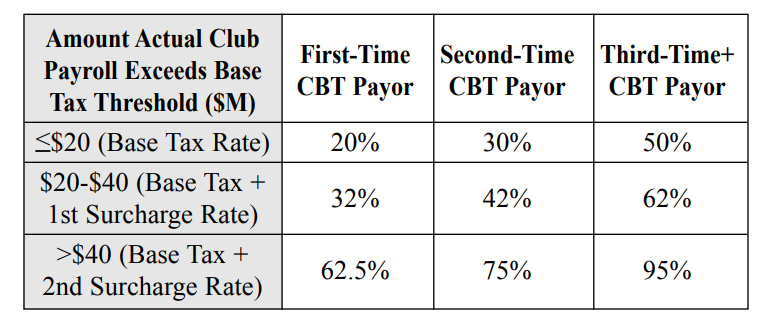Almost exactly two years ago, December 30th of 2019, the White Sox signed Dallas Keuchel to a three-year contract that guaranteed him $55.5MM. Keuchel was excellent in the shortened 2020 campaign, throwing 63 1/3 innings with an ERA of 1.99. However, there were reasons to be suspicious of those outcomes, as all of the advanced metrics thought he deserved much worse. (4.30 xERA, 3.98 xFIP, 4.57 SIERA.)
That discrepancy was largely due to his declining strikeout rate, as well as an unsustainable 4.7% HR/FB rate. Keuchel has always been a groundball guy and has never had tremendous strikeout stuff. In his Cy Young season, 2015, he hit his high point with a strikeout rate of 23.7%, just a few ticks above that year’s league average of 20.4%. Since then, the league average has trended north, landing at 23.2% in 2021. Keuchel’s, however, has been steadily dropping and was at 16.3% in 2020.
In 2021, his strikeout rate fell further, landing at 13.2%, and his batted ball luck ran out, sending his ERA soaring up to a career-high 5.28. The advanced metrics felt that was largely deserved, based on the lack of Ks, as evidenced by his 6.20 xERA, 4.74 xFIP and 5.01 SIERA.
With one guaranteed year remaining on his contract, it makes sense for the White Sox to look into trading him for a couple of reasons. First, there’s his diminished effectiveness, as illustrated by those declining strikeout rates and increasing ERA. It’s possible that he could turn things around, but he turns 34 tomorrow, New Year’s Day, meaning he would have to buck traditional aging trends to do it.
Secondly, there’s his salary, as he’ll be paid $18MM in 2022, along with a $1.5MM buyout on a $20MM club option for 2023. The team is in unprecedented payroll territory, for them, having set a franchise record in 2021 by having an Opening Day payroll of $128.7MM. They’re projected to blow way past that in 2022, currently sitting around $180MM, in the estimation of Jason Martinez of Roster Resource.
However, the problem with that club option is that it’s actually a club/vesting option. It becomes guaranteed if Keuchel pitches at least 160 innings in each of 2021 and 2022. He’s already hit the first of those benchmarks, as he threw 162 innings in 2021. Another season of 160 innings and that $20MM for 2023 becomes guaranteed. That’s not a difficult line for Keuchel to reach as long as he’s healthy. Over the past eight seasons, he reached that threshold in six of them, if we prorate his 2020 innings total. In 2017, he missed some time with neck issues and came just shy, at 145 2/3 innings. And in 2019, he got to 112 2/3, but that was because he lingered on the free agent market until being signed by Atlanta a few months into the season and didn’t make his season debut until June 21st. In other words, apart from that neck issue in 2017, he’s been a fairly reliable innings eater, meaning he has a decent chance of triggering that option.
This is where it gets tricky to line up a trade. A team with some wiggle room in their budget might be willing to take on Keuchel’s $18MM for this coming season, but they would have to also consider the distinct possibility that Keuchel stays healthy and doubles their commitment, both in dollars and in years. It’s possible a team could acquire Keuchel and try to intentionally limit his innings to prevent the option from vesting, but that type of direct manipulation has the potential to lead to a grievance, either an official one or an unofficial one. As an example of how an unofficial grievance could hurt a team, it could reduce their chances of signing or extending players if they have shown themselves to be underhanded in their dealings with players. Perhaps the White Sox could sweeten the pot for the team on the other end of the deal by including a prospect or two, but the trouble is that their farm isn’t in great shape, at least according to Baseball America, who ranked their system dead last in the league in their most recent Organization Talent Rankings.
Perhaps the best move for the White Sox is to stand pat with Keuchel and hope that he has a bounceback campaign. Their starting five rotation looks to be solid, with Keuchel joined by Lance Lynn, Lucas Giolito, Dylan Cease and Michael Kopech. However, teams need more than five starters to get through a season and their depth isn’t terribly strong. Jonathan Stiever and Jimmy Lambert are depth options on the 40-man roster, but neither has more than 15 innings of MLB experience, and even their Triple-A numbers aren’t terribly exciting so far. Even if the club finds the money to add another starter, they might need Keuchel’s help to get through the season in an AL Central that is becoming more competitive.

